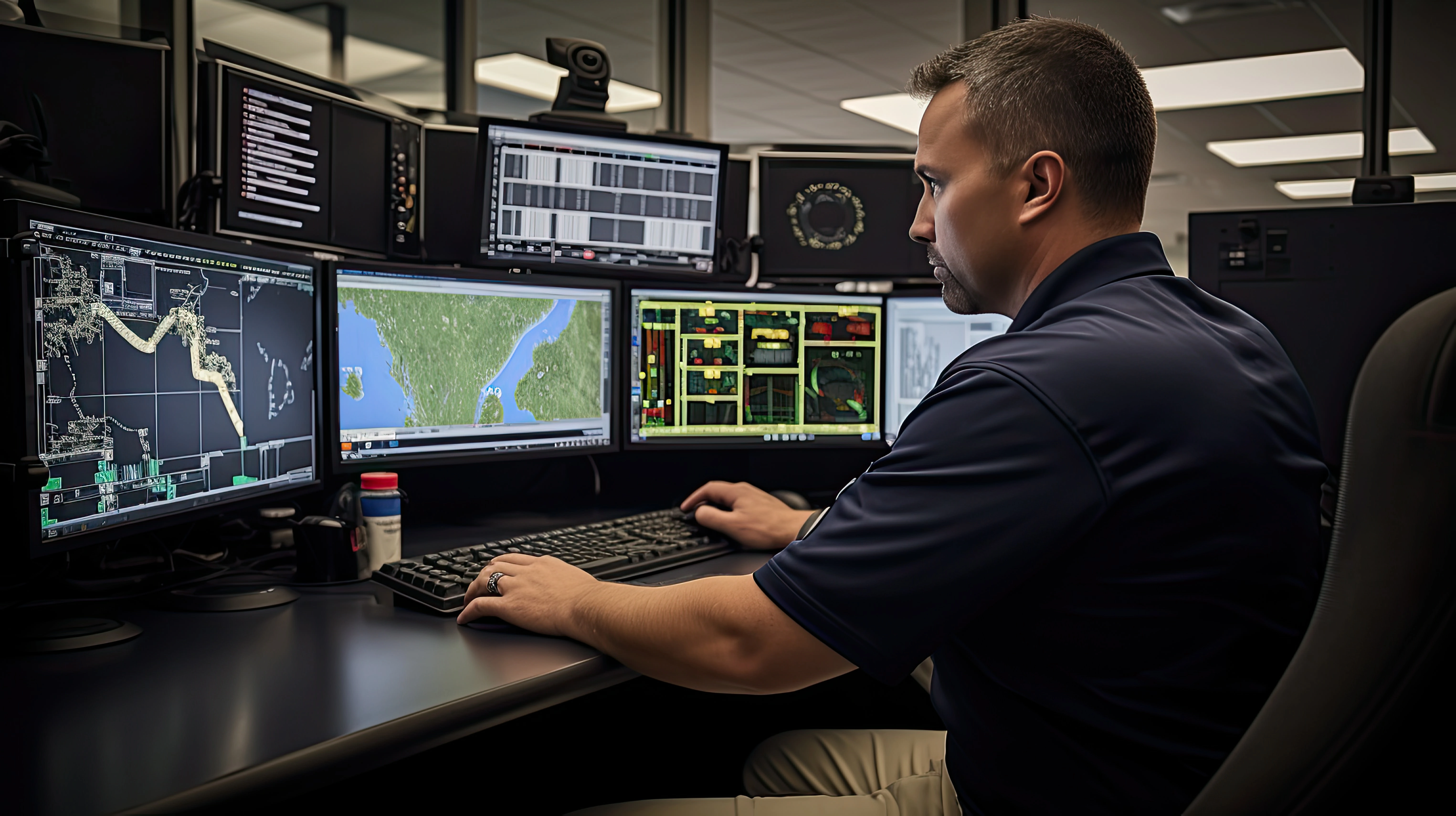The Role of Telematics and AI in the Trucking Industry

The transportation industry is undergoing a significant transformation driven by telematics and AI-powered risk management. In the United States, fleet telematics revenue has been increasing at an annual growth rate of 3.7% over the past five years, reaching an estimated $8.8 billion in 20241. Fleets are increasingly adopting these advanced technologies to lower costs, enhance safety, and streamline operations. Penske’s 2022 Telematics Use and Trends report shared that 54% of large fleets, 51% of medium fleets, and 37% of small fleets use telematics. But how do telematics and AI influence the industry, and what advantages do they offer for trucking companies?
Understanding Telematics
Telematics combines telecommunications and data analytics to track, monitor, and assess vehicle performance and driver behavior. Devices such as GPS trackers, dashcams, and onboard diagnostics (OBD) systems gather critical data, including:
-
Speed and acceleration patterns
-
Braking intensity
-
Idle time and fuel usage
-
Route efficiency
-
Driving behavior (e.g., aggressive turning, distracted driving)
Insurers use this information to evaluate risk more accurately, allowing businesses with safe driving practices to potentially benefit from lower premiums while identifying areas for improvement.
The Role of AI in Enhancing Telematics
Artificial Intelligence (AI) amplifies the power of telematics by enabling real-time analysis, predictive insights, and automated responses. Here’s how AI is revolutionizing risk management:
- Smart Dashcams for Safer Driving
Modern AI-driven dashcams don’t just record video; they actively detect distracted driving, signs of fatigue, and aggressive maneuvers. When a potential risk is identified, instant alerts notify drivers and fleet managers, allowing quick intervention. - Predictive Analytics for Risk Reduction
AI processes vast amounts of telematics data to predict which drivers or vehicles are more likely to be involved in an accident. Fleet managers can use this insight to provide targeted coaching and implement corrective measures before an incident occurs. - Improved Driver Performance Monitoring
By continuously tracking driving behavior such as speed, braking patterns, and acceleration, telematics systems help ensure compliance with company policies and promote safer driving habits.
The Tangible Benefits of Telematics
Fleet managers who integrate telematics into their operations have the potential to see real benefits:
-
Reduced Fuel Costs: 55% of fleets report lower fuel expenses due to optimized routing and monitoring driver behaviors such as excessive idling.
-
Enhanced Safety: 42% of fleets experience fewer safety incidents by tracking driver performance and implementing corrective measures.
-
Lower Maintenance Costs: Predictive maintenance alerts help prevent costly breakdowns, extending vehicle lifespan.
-
Improved Compliance: Electronic logging devices (ELDs) ensure adherence to hours-of-service (HOS) regulations, reducing the risk of violations and penalties.
-
Theft Prevention & Asset Recovery: Telematics solutions help fleet managers track stolen vehicles and assets in real-time, increasing the likelihood of recovery and reducing losses.
Preparing for the Future
With the telematics landscape evolving rapidly, fleets should consider taking the following steps:
-
Evaluate Telematics Providers: Choose a solution that aligns with your fleet’s size, operational needs, and long-term goals.
-
Train Drivers on Best Practices: Ensure drivers understand how telematics data helps enhance safety and efficiency.
-
Leverage Data for Strategic Decisions: Use telematics insights to optimize routes, reduce downtime, and enhance fleet performance.
Final Thoughts
Telematics is no longer just for large fleets—it’s a critical tool for small to mid-size operators looking to reduce costs, improve safety, and stay competitive in a rapidly changing industry. By embracing telematics, your fleet can unlock new efficiencies and position itself for long-term success.
At Acuity Insurance, we understand the unique challenges faced by commercial fleets. Our team is here to help you navigate the evolving telematics and fleet management landscape. Please get in touch with us today to learn how we can support your business, or contact your independent insurance agent.
Sources
1 https://www.ibisworld.com/united-states/industry/fleet-telematics-systems/4546/
An insurance company that cares about you and insuring the things you wish to be insured.
Get a Quote> Find an Agent>
